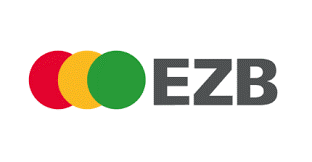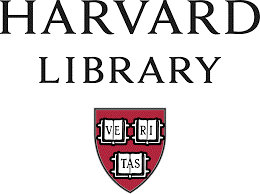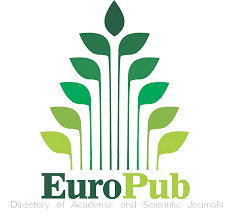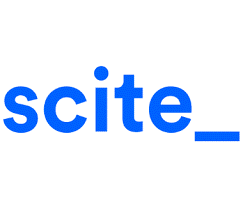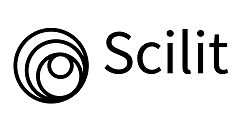Código de Ética
Bosques Latitud Cero is based on the internal ethics code of the National University of Loja and adheres to the code of conduct of the Committee on Publication Ethics (COPE). This code is directed at editors, reviewers, and authors.
The journal promotes freedom of expression, as long as it aligns with the principles of academic integrity, respect for diverse opinions, and responsibility in the dissemination of knowledge; however, the contents and concepts expressed in the articles are the sole responsibility of the authors.
1. Commitments and Responsibilities of Authors
Authors submitting manuscripts to Bosques Latitud Cero must read, understand, and comply with the guidelines and best practice protocols outlined in the ethics and conduct code. They must also accept and adhere to the submission requirements, selection procedures, and manuscript publication standards adopted by the journal.
Submitting manuscripts that describe essentially the same research to multiple journals, whether in a redundant, simultaneous, or multiple manner, is considered unethical and unacceptable, except when authors and editors agree to secondary publication, or if the manuscript appears as a summary or part of a conference or academic thesis, or as an electronic preprint. The primary reference must be cited in the secondary publication.
- Originality and Plagiarism
Authors must ensure that the submitted articles are original, unpublished, and do not contain excerpts from other authors or previously published works in Spanish or any other language. They must also verify the accuracy of the data presented to test or verify the proposed hypotheses and ensure proper citation of the sources used. Please consider that submitted manuscripts will be evaluated using specialized anti-plagiarism software.
Authors must avoid fragmentation of a study, self-plagiarism, recycling of text, duplicate publication of articles sharing the same hypothesis, data, arguments, or conclusions, whether literally or through paraphrasing, without cross-references, data manipulation, falsification, or omission of the authorship of prior research, or without the necessary permission for reproduction and/or acknowledgment of the original source.
Authors must respect intellectual property rights. Any third-party material used in the article, such as photographs, graphics, illustrations, maps, tables, diagrams, or other multimedia content, must be properly authorized for reproduction. This ensures compliance with legal and ethical standards related to the use of copyrighted works.
- Authorship and Contributions
The authorship of the article should be limited to those who have made significant contributions to the conception, design, execution, analysis, or interpretation of the study. Those making substantial contributions should be recognized as co-authors. People who have participated in specific or minor aspects of the study should be acknowledged in the "Author Contributions" section or in the "Acknowledgments" section, ensuring proper and transparent recognition of all contributions.
The corresponding author must ensure that all appropriate co-authors are included in the document and that each has reviewed and approved the final version of the manuscript. Authors assume collective and full responsibility for the content of the article, committing to thoroughly investigate and resolve any issues related to the accuracy or integrity of any part of the work. They must ensure that a thorough review of the most current and relevant scientific literature has been conducted, considering diverse perspectives. Authors and co-authors must declare any conflicts of interest that may influence the results or interpretation of the study.
If an author identifies a significant error or inaccuracy in their published article, they must immediately notify the editorial team, providing the necessary information to make the appropriate corrections. These corrections will be implemented in the electronic version and communicated through an erratum in the printed version. Additionally, in exceptional circumstances and at their discretion, the editor may consider adding, removing, or reorganizing authors after manuscript submission. The corresponding author must explicitly inform the editor of such requests, ensuring that all involved authors agree to these changes before they are implemented.
The journal does not accept three inappropriate practices in authorship: a) falsification, which involves including people who have not significantly contributed to the research or omitting those who have, as well as submitting manuscripts without the explicit consent of all authors; b) ghost authorship, referring to the lack of recognition of professional writers or data analysts who participated in the study; and c) honorary authorship, based on weak affiliation with the research or the expectation that including a name will increase publication chances.
If the study includes chemicals, procedures, or equipment presenting unusual risks, the author must clearly identify them in the manuscript. Moreover, when the research involves the use of animal or human subjects, the author must ensure that the manuscript contains a statement certifying compliance with laws, institutional regulations, and approval from the relevant ethical committees. If ancestral knowledge and practices related to plants or animals are used, their origin must be recognized and respected. When case details, personal information, or images of individuals are included, the author must obtain the corresponding consents, permissions, and releases, keeping written records of these authorizations and providing them to the journal upon request.
2. Commitments and Responsibilities of Reviewers
The peer review process is essential for authors to improve their work and for editors to make decisions about articles. Reviewers must be qualified professionals external to the journal, conducting a critical, impartial, honest, constructive, and unbiased evaluation based on scientific arguments. They should assess both the scientific and literary quality of the manuscript within their area of expertise, following the criteria set by the journal, and determine whether the manuscript is publishable, not publishable, or requires modifications. Reviewers should provide clear and specific recommendations to authors. Personal or derogatory criticisms are not allowed.
Reviewers must promptly disclose any personal or financial conflicts of interest, lack of expertise on the topic, potential bias, time constraints, or any other reason that would hinder an objective and transparent evaluation.
Reviewers must commit to adhering to the established deadlines for evaluation. They are also responsible for ensuring that manuscripts and study data are not disclosed, discussed, or shared with third parties without the explicit authorization of the editors. Reviewers should not conduct independent investigations unless explicitly requested by the journal.
If a reviewer detects irregularities, such as plagiarism, self-plagiarism, lack of references, data manipulation, or unethical behavior, they must immediately report them to the editors.
3. Commitments and Responsibilities of Editors and Editorial Team
Editors must ensure that manuscripts align with the journal’s themes, format, rules, and scope, evaluating them solely based on their scientific quality. This process is carried out without any discrimination based on race, gender, religion, nationality, political orientation, institutional affiliation, or sexual orientation of the authors. Moreover, an impartial, objective, and transparent process is guaranteed, maintaining anonymity throughout all stages of evaluation and publication, while promoting ethical practices among authors, reviewers, and other involved parties.
Editors and the Editorial Committee commit to maintaining the confidentiality of manuscripts, as well as the identity of their authors and reviewers, avoiding disclosing this information to unauthorized persons. This approach ensures the anonymity needed to preserve intellectual integrity and guarantees that the evaluation process is conducted in a fair and professional manner.
Editors must refrain from engaging in any situation that could lead to a conflict of interest and compromise their objectivity during the review and publication process. Additionally, they are prohibited from using the content of submitted manuscripts for personal research purposes without the explicit consent of the authors. If there is a personal interest in a manuscript, it will be delegated to other editorial team members, ensuring impartial and fair decisions.
The editorial team is responsible for managing all received articles, implementing mechanisms that guarantee objectivity in the review process. After evaluations are completed, editors inform authors of the reasons behind the decision made, ensuring clarity and transparency in their communications. Decisions to accept or reject an article are based on its scientific quality, originality, and relevance to the journal.
Editors are responsible for investigating any reports of unethical conduct, such as plagiarism or fraud, and ensuring that corrective actions are taken. If necessary, corrections, rectifications, or clarifications will be published through the journal's website, ensuring transparency and the integrity of the editorial process.
The editorial team promotes ethical practices among authors, reviewers, and other actors involved in the editorial process. This includes adhering to established timelines: a maximum of 30 days to communicate initial acceptance or rejection of a manuscript after its receipt, and a maximum of 120 days to complete the scientific review process. This ensures efficiency and transparency at every stage of the editorial process.
Once a volume is published, the editorial team ensures widespread dissemination of the content. This includes distribution to repositories, databases, and national and international indexing systems, as well as active promotion of the published volume and articles, ensuring their visibility and reach.
4. Complaint Handling
Complaints will be accepted only if they are properly substantiated, and will be addressed following the guidelines and procedures established by COPE, as well as the journal’s internal rules. In no case will the resolution of complaints involve revealing the identity of reviewers, ensuring confidentiality and the integrity of the editorial process.
Any claim related to an evaluation process will be considered as long as the author identifies possible errors in the review process. The competency of the reviewer will not be questioned. Complaints must be directed to the Editor, accompanied by a clear argument and supporting evidence for consideration. If necessary, support from the Editorial Committee or an expert member on the article’s topic will be requested. The response to the complaint will be issued within a maximum of three months.
If a plagiarism report is received after an article has been published and confirmed by the Editorial Board, the article will be removed from the published volume's webpage and from all repositories and databases where the plagiarized text appears, followed by a statement on the journal's website to disclose the incident.

Anti-plagiarism Policy
Authors guarantee the originality of their manuscripts, committing to avoid plagiarism—defined as the appropriation of texts from others without citation, even with permission—and to refrain from excessively reusing their own texts, so that similarity with previous works does not exceed 20% and detected similarity does not surpass 8%. Should this occur, the article will undergo a thorough review of its sources, and the author will be notified, with the possibility of either rejecting the work or requesting its revision with the appropriate citations. Additionally, the article must be unpublished, not under evaluation by another publication, and not previously published, except for updated works derived from scientific presentations, provided that their origin is specified to the editorial board.
-
Use of Plagiarism Detection Software
The journal employs specialized tools for detecting similarity, such as Turnitin or CopyLeaks. A maximum similarity threshold of 8% is established, excluding citations and references. -
Multi-Stage Review
Plagiarism control is performed at different stages of the editorial process:- Before peer review: to discard manuscripts with high similarity.
- After peer review: before final acceptance, to verify that revisions have not introduced non-original content.
-
Types of Plagiarism Considered
The journal recognizes and sanctions various forms of plagiarism, including:- Direct plagiarism: Literal copying without citation.
- Paraphrasing plagiarism: Reformulating ideas without giving proper credit.
- Self-plagiarism or duplicate publication: Excessive reuse of previous works by the same author without proper reference.
- Mosaic plagiarism: Combining fragments from different sources without acknowledgment.
- Data fabrication or manipulation: Falsifying results to fit hypotheses.
-
Consequences of Plagiarism
If plagiarism is detected in a manuscript, measures may include:- Immediate rejection of the article.
- Notification of the authors and their institutions in severe cases.
- Prohibition of future submissions from the implicated authors.
- Retraction of published articles if plagiarism is discovered post-publication.
-
Declaration of Originality and Copyright
Authors must ensure that their manuscript is unpublished, has not been simultaneously submitted to another journal, and complies with citation standards in accordance with the CC BY-NC-SA 4.0 rights and attributions Creative Commons Atribution-NonComercial-ShareAlike 4.0. -
Retraction and Correction Policies
If plagiarism or unethical practices are detected after publication, the journal follows protocols based on the guidelines of the Committee on Publication Ethics (COPE). This may include:- Corrections (errata) if the issue is minor.
- Expressions of concern if further investigation is required.
- Retraction of the article, accompanied by an official notice explaining the reasons.
References:
(S/f). Publicationethics.org. Recuperado el 28 de enero de 2025, de https://publicationethics.org/guidance?f%5B0%5D=type%3A21
Ecuador, F. (1997). Íconos : revista de ciencias sociales. https://iconos.flacsoandes.edu.ec/iconos/iconos-codEtica
Current policies. (s/f). Wma.net. Recuperado el 28 de enero de 2025, de https://www.wma.net/policy/current-policies/
Código Ético. (s/f). Edu.ec. Recuperado el 28 de enero de 2025, de https://revistas.unl.edu.ec/index.php/economica/Codigo_Etico
De, L. 0. R. O. S. 983. (s/f). CODIGO ORGANICO DEL AMBIENTE. Gob.ec. Recuperado el 28 de enero de 2025, de https://www.ambiente.gob.ec/wp-content/uploads/downloads/2018/01/CODIGO_ORGANICO_AMBIENTE.pdf



